Mad Hedge Biotech and Healthcare Letter
May 24, 2022
Fiat Lux
Featured Trade:
(FROM A BORING BIOTECH TO A TRAILBLAZING PIONEER)
(VRTX), (ABBV), (MRNA), (CRSP), (EDIT), (BEAM), (NTLA)

Mad Hedge Biotech and Healthcare Letter
May 24, 2022
Fiat Lux
Featured Trade:
(FROM A BORING BIOTECH TO A TRAILBLAZING PIONEER)
(VRTX), (ABBV), (MRNA), (CRSP), (EDIT), (BEAM), (NTLA)

When will the turmoil in the stock market come to an end? Unfortunately, nobody can offer a definitive answer.
At this point, there’s still no end in sight to high inflation, climbing interest rates, and the continuing war in Ukraine.
Needless to say, all these issues are affecting the stock market. However, not all stocks are getting negatively affected by the turmoil.
There are still relatively safe bets to buy, with some crushing the market these days.
One of them is Vertex (VRTX).
Vertex stock soared by over 30% year-to-date by mid-April.
While it has given up some of that gain in the past weeks, this biotechnology and healthcare stock is comfortably outperforming the rest of the market, with its shares still up by around 15%.
One reason for Vertex’s good performance is its undisputed monopoly in the cystic fibrosis (CF) market. In fact, its closest potential competitor is AbbVie (ABBV), which recently announced disappointing results for its Phase 2 trials for a CF combo.
This means Vertex’s dominance in the CF space is set to go on for quite some time.
Here’s a bit of background. Vertex has 4 CF treatments.
Among these, the latest treatment, Trikafta, generates the lion’s share of the profits. It raked in $1.7 billion in the first quarter of 2022 alone, with the total revenue for the entire CF pipeline recording $2 billion.
Considering its approved indications and potential approvals, Trikafta is anticipated to treat 90% of the entire CF patient population.
Looking at its current performance and how strong its hold is in the CF market, it appears that Vertex’s prediction that it can sustain its dominance in this segment until at least the late 2030s will be proven right.
Moreover, it’s evident that Trikafta has yet to reach its peak revenue. However, Vertex isn’t depending on this particular treatment alone.
Rather, the company is working on developing a worthy competitor to this top-selling treatment.
That is, Vertex is working on a CF candidate that may potentially be even more effective than Trikafta.
So far, this new drug candidate not only has the capacity to beat Trikafta in terms of efficacy but also offers a more convenient option.
Trikafta is a twice-a-day oral drug that comes in the form of 3 tablets. Meanwhile, this potential competitor is a once-a-day alternative.
If everything goes according to plan, the Phase 3 trial for this Trikafta challenger could start by the end of 2022 or early 2023.
This means that the closest potential rival for the company’s top-selling treatment is its own candidate.
Apart from this, Vertex is working with Moderna (MRNA) to come up with an mRNA therapy for CF patients.
The goal is to offer an alternative option to patients who are not eligible for the current CF therapies.
Although this continued dominance in the CF sector is already a good enough reason to buy Vertex shares, they may be an even better one.
To date, Vertex has at least 6 programs queued in mid to late-stage clinical studies, all of which are projected to become multi-billion dollar revenue streams.
Outside its CF segment, Vertex could have another big winner in the form of gene-editing treatment CTX001.
This is a treatment for sickle cell disease and transfusion-dependent beta-thalassemia that the company has been working on with CRISPR Therapeutics (CRSP).
While CTX001 is promising, it won’t be entering the gene therapy market without any competition. It has to battle the likes of Editas (EDIT), Beam Therapeutics (BEAM), and Intellia (NTLA).
Nonetheless, CTX001, if approved, is a game-changer because it is developed as a one-time cure for genetic blood disorders.
So far, trial results have been positive, and the collaborating duo is expected to file for regulatory approval by the end of 2022 and possibly launch the product by the first half of 2023.
This gene-editing therapy is a significant milestone for Vertex, with CTX001 expected to become another blockbuster, raking in roughly $1 billion in annual sales for the company even after giving CRISPR its share of the profits.
Recently, Vertex added another $900 million to its collaboration with CRISPR to boost its share from 50% to 60%, indicating that it values CTX001 at roughly $10 billion.
Other critical treatments outside the CF space are VX548, an opioid alternative targeting acute pain, and VX800, a stem cell-derived therapy developed to treat Type 1 diabetes.
Vertex has been accused as a company scared of getting out of its comfort zone for quite some time.
With these new ventures, Vertex has become something of a pioneer—a strategy that is projected to open long-term and lucrative revenue streams for the company.
Overall, all these efforts paint an obvious picture. That is, Vertex is a well-balanced company with a main business that capably and reliably generates billions and is complemented by an exciting pipeline that holds the potential to replicate the success of its already established portfolio.
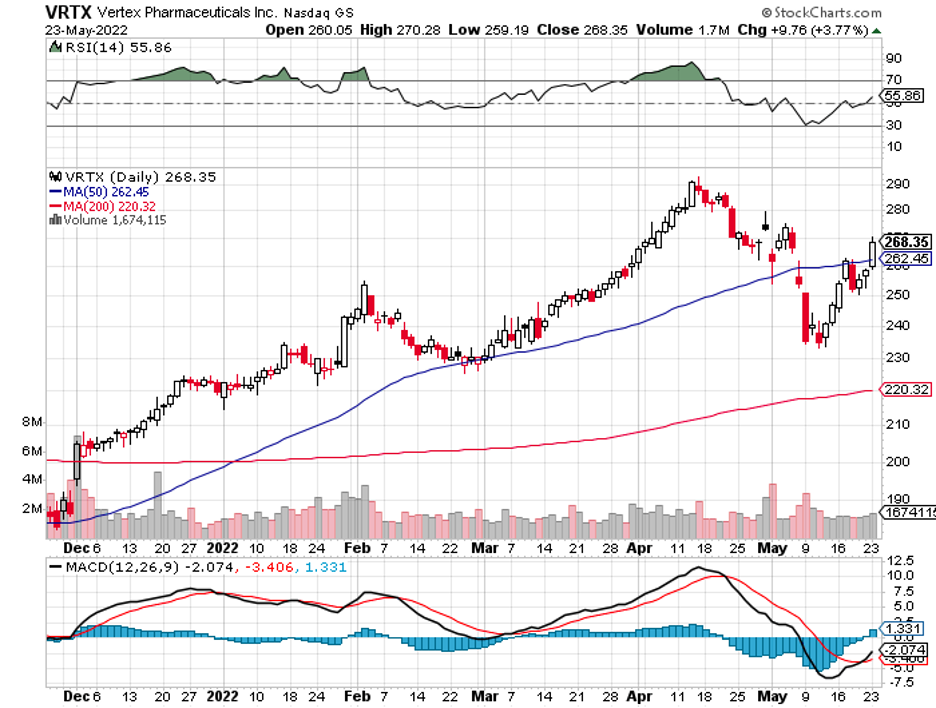
Global Market Comments
April 20, 2022
Fiat Lux
Featured Trade:
(TESTIMONIAL),
(TEN MORE TRENDS TO BET THE RANCH ON),
(AAPL), (AMZN), (GOOGL), (TSLA), (CRSP), (EDIT), (NTLA)

Global Market Comments
April 11, 2022
Fiat Lux
Featured Trade:
(MARKET OUTLOOK FOR THE WEEK AHEAD,
or WATCH OUT FOR THE RECESSION WARNINGS)
(TLT), (TSLA), (FB), (CRSP), (TDOC), (GILD), (EDIT), (SQ), (INDU), (NVDA), (GS)

The drumbeat of a coming recession is getting louder and louder.
There is no doubt that the traditional signals of a slowing economy are already flashing yellow, if not bright red.
Rocketing interest rates are the most obvious one, with ten-year US Treasury bonds yield soaring from 1.33% to 2.71% in a mere four months. This is why investors pulled a gut-punching $87 billion out of bond funds in Q1.
If the Fed continues with a quarter point rise at every meeting for the rest of the year, we might escape this cycle without a recession. If the Fed ramps up to a half point rate at every meeting as was discussed last week a recession becomes a sure thing.
Imminent positive real yields for the first time in a decade also threaten to draw money out of stocks and into bonds.
I happen to be in the non-recessionary camp and the reason is very simple. Companies are making too much damn money. This is especially true for technology companies, which account for some 75% of the profits made in the US. If anything, their profits are accelerating, although at a lower rate than seen in 2021.
Certainly, the tech companies themselves aren’t buying the recession scenario. They are hiring and investing as if the economic boom will continue forever. Tesla alone has completed two new factories in the past month, in Berlin, Germany and Austin, Texas, each capable of producing a half million vehicles a year. Tesla’s existing factories are all expanding capacity.
Sitting here in Silicon Valley, I can tell you that the job market is as hot as ever. Those who have jobs, like my own kids, are besieged with multiple job offers. It seems the standard time to keep a job these days is a year, after which one takes the next upgrade, promotion, and batch of stock options.
But the stock market seems hell-bent on discounting a recession anyway. You see this in the most economically sensitive sectors of the market, banks, semiconductors, and transport, which have just clocked a miserable month. If I am right (I’m always right), and there is no recession, these will be the sectors that lead the recovery.
Until the market makes up its mind, the disciplined among us will have to while away our time constructing lists of companies to buy for the rebound. That’s when the next leg of the bull market resumes.
We find out when this happens on Wednesday when the next batch of inflation data is released, which is likely to be diabolical.
Quantitative Tightening to Start as Soon as May, according to Fed Governor Brainard. That means our central bank will start selling its vast $9 trillion in bond holding in two months, a huge market negative. Bonds tanked. The Fed only quit quantitative easing in March.
Tesla Blows Away Q1 Sales, shipping 310,000 vehicles, far above expectations. This is despite supply chain problems, soaring interest rates, and the Ukraine War. Sky-high gasoline prices helped a lot, which is driving buyers into Tesla showrooms in drives. All other competitors are falling farther behind, unable to obtain parts and commodities which Tesla locked up long ago. This puts Tesla well on its way to its 1.5 million production goal for this year. Keep buying (TSLA) on dips. My long-term target is $10,000 a share.
The Metaverse May be Worth $13 Trillion by 2030, says Citibank. The same is so for Web 3.0, which includes virtual worlds, like gaming and applications in virtual reality. Citi’s broad vision of the metaverse includes smart manufacturing technology, virtual advertising, online events like concerts, as well as digital forms of money such as cryptocurrencies like I’ll be looking for the best plays.
Biotech May Be Staging a Comeback, after spending a year in hell, taking some shares down 80%-90%. Investors are also nibbling at the sector as a recession and bear market plays, as these companies keep growing regardless of the economic cycle. Buy (CRSP), Teledoc (TDOC), Gilead Sciences (GILD), ad Editas Medicine (EDIT) on dips.
US Bonds Just Suffered their Worst Quarter in a Half Century, with yields rocketing from 1.33% to 2.71%, and Mad Hedge was triple short most of the way down. Bear LEAPS holders, which are many of you, made fortunes. We could stall around current levels until the Fed delivered both barrels of a shot gun, two back-to-back half point rate rises from the Fed.
30-Year Fixed Rate Mortgage Rates Top 5.00%, trashing the home builders. If you thought buying a home was tough, its worst now. So far, no impact on home prices.
US Dollar Hits New Two-Year High. It’s all about rising interest rates. Expect a stronger greenback to come before the turn. The coming QT will put a two-step turbocharger on the move.
German Battery Sales Soar By 67%, to residential buyers to cope with pending energy shortages. Germany already has 2.2 million solar installations out of a population of 83 million. It’s a very smart move as batteries powered by solar panels can remove you from the grid entirely, as I have amply proven with my own installation. It may be the permanent solution to over-dependence on Russian energy supplies.
Tesla Moving into Bitcoin Mining, in partnership with Blockstream and Block, formerly Square (SQ). Tesla will supply the electric power with its massive 3.8-megawatt solar array. That is the size of a large nuclear power plant. The mining facility is designed to be a proof of concept for 100% renewable energy bitcoin mining at scale. If Elon Musk likes Bitcoin maybe you should too.
The Bank of Japan Now Owns 7% of the Japanese Stocks Market. The central bank had to buy the shares after it had already bought all the bonds in the country to support the economy. So, what happens when the policy flips from QE to QT? How about unloading $371 billion worth of shares on the market. This would e a neat trick since so much of the country’s shares are locked up in corporate cross holdings. Methinks I’ll be steering clear of Japanese stocks for the foreseeable future.
My Ten-Year View
When we come out the other side of pandemic, we will be perfectly poised to launch into my new American Golden Age, or the next Roaring Twenties. With interest rates still historically cheap, oil peaking out soon, and technology hyper accelerating, there will be no reason not to. The Dow Average will rise by 800% to 240,000 or more in the coming decade. The America coming out the other side of the pandemic will be far more efficient and profitable than the old. Dow 240,000 here we come!
My March month-to-date performance retreated to a modest 0.38%. My 2022 year-to-date performance ended at a chest-beating 27.23%. The Dow Average is down -4.20% so far in 2022. It is the greatest outperformance on an index since Mad Hedge Fund Trader started 14 years ago. My trailing one-year return maintains a sky-high 68.89%.
On the next capitulation selloff day, which might come with the April Q1 earnings reports, I’ll be adding long positions in technology, banks, and biotech. I am currently in a rare 100% cash position awaiting the next ideal entry point.
That brings my 13-year total return to 539.79%, some 2.10 times the S&P 500 (SPX) over the same period. My average annualized return has ratcheted up to 44.36%, easily the highest in the industry.
We need to keep an eye on the number of US Coronavirus cases at 80.3 million, up only 100,000 in a week and deaths topping 985,000 and have only increased by 2,000 in the past week. You can find the data here. Growth of the pandemic has virtually stopped, with new cases down 98% in two months.
On Monday, April 11 at 8:00 AM EST, Consumer Inflation Expectations are released.
On Tuesday, April 12 at 8:30 AM, the Core Inflation Rate for March is announced.
On Wednesday, April 13 at 8:30 AM, the Producer Price Index for March is printed.
On Thursday, April 14 at 7:30 AM, the Weekly Jobless Claims are printed. We also get Retail Sales for March.
On Friday, April 8 at 8:30 AM, NY Empire State Manufacturing Index for March. At 2:00 PM, the Baker Hughes Oil Rig Count is out.
As for me, back in 2002, I flew to Iceland to do some research on the country’s national DNA sequencing program called deCode, which analyzed the genetic material of everyone in that tiny nation of 250,000. It was the boldest project yet in the field and had already led to several breakthrough discoveries.
Let me start by telling you the downside of visiting Iceland. In the country that has produced three Miss Universes over the last 50 years, suddenly you are the ugliest guy in the country. Because guess what? The men are beautiful as well, the decedents of Vikings who became stranded here after they cut down all the forests on the island for firewood, leaving nothing with which to build long boats. I said they were beautiful, not smart.
Still, just looking is free and highly rewarding.
While I was there, I thought it would be fun to trek across Iceland from North to South in the spirit of Shackleton, Scott, and Amundsen. I went alone because after all, how many people do you know who want to trek across Iceland? Besides, it was only 150 miles or ten days to cross. A piece of cake really.
Near the trailhead, the scenery could have been a scene from Lord of the Rings, with undulating green hills, craggy rock formations, and miniature Icelandic ponies galloping in herds. It was nature in its most raw and pristine form. It was all breathtaking.
Most of the central part of Iceland is covered by a gigantic glacier over which a rough trail is marked by stakes planted in the snow every hundred meters. The problem arises when fog or blizzards set in, obscuring the next stake, making it too easy to get lost. Then you risk walking into a fumarole, a vent from the volcano under the ice always covered by boiling water. About ten people a year die this way.
My strategy in avoiding this cruel fate was very simple. Walk 50 meters. If I could see the next stake, I proceeded. If I couldn’t, I pitched my tent and waited until the storm passed.
It worked.
Every 10 kilometers stood a stone rescue hut with a propane stove for adventurers caught out in storms. I thought they were for wimps but always camped nearby for the company.
I was 100 miles into my trek, approached my hut for the night, and opened the door to say hello to my new friends.
What I saw horrified me.
Inside was an entire German Girl Scout Troop spread out in their sleeping bags all with a particularly virulent case of the flu. In the middle was a girl lying on the floor soaking wet and shivering, who had fallen into a glacier fed river. She was clearly dying of hypothermia.
I was pissed and instantly went into Marine Corp Captain mode, barking out orders left and right. Fortunately, my German was still pretty good then, so I instructed every girl to get out of their sleeping bags and pile them on top of the freezing scout. I then told them to strip the girl of her wet clothes and reclothe her with dry replacements. They could have their bags back when she got warm. The great thing about Germans is that they are really good at following orders.
Next, I turned the stove burners up high to generate some heat. Then I rifled through backpacks and cooked up what food I could find, force-fed it into the scouts and emptied my bottle of aspirin. For the adult leader, a woman in her thirties who was practically unconscious, I parted with my emergency supply of Jack Daniels.
By the next morning, the frozen girl was warm, the rest were recovering, and the leader was conscious. They thanked me profusely. I told them I was an American “Adler Scout” (Eagle Scout) and was just doing my job.
One of the girls cautiously moved forward and presented me with a small doll dressed in a traditional German Dirndl which she said was her good luck charm. Since I was her good luck, I should have it. It was the girl who was freezing the death the day before.
Some 20 years later I look back fondly on that trip and would love to do it again.
Anyone want to go to Iceland?
Stay Healthy,
John Thomas
CEO & Publisher
The Diary of a Mad Hedge Fund Trader

Iceland 2002

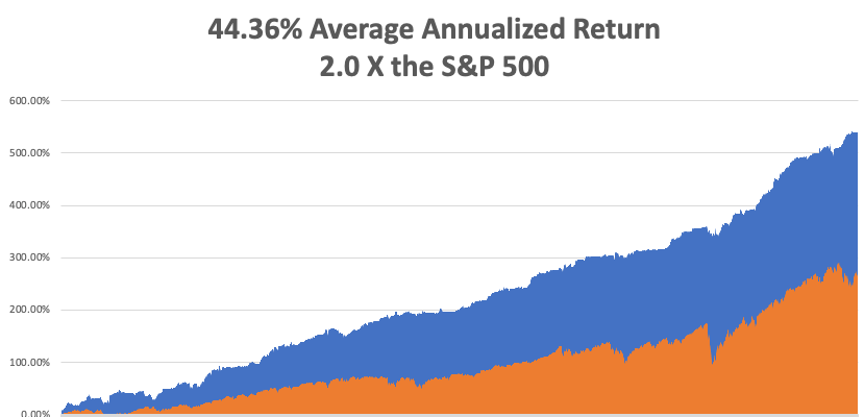
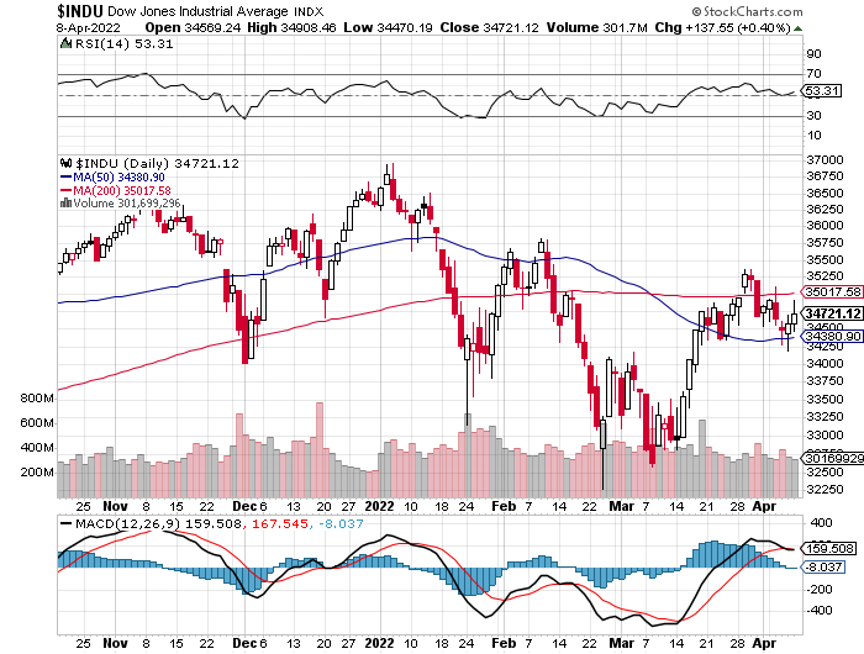
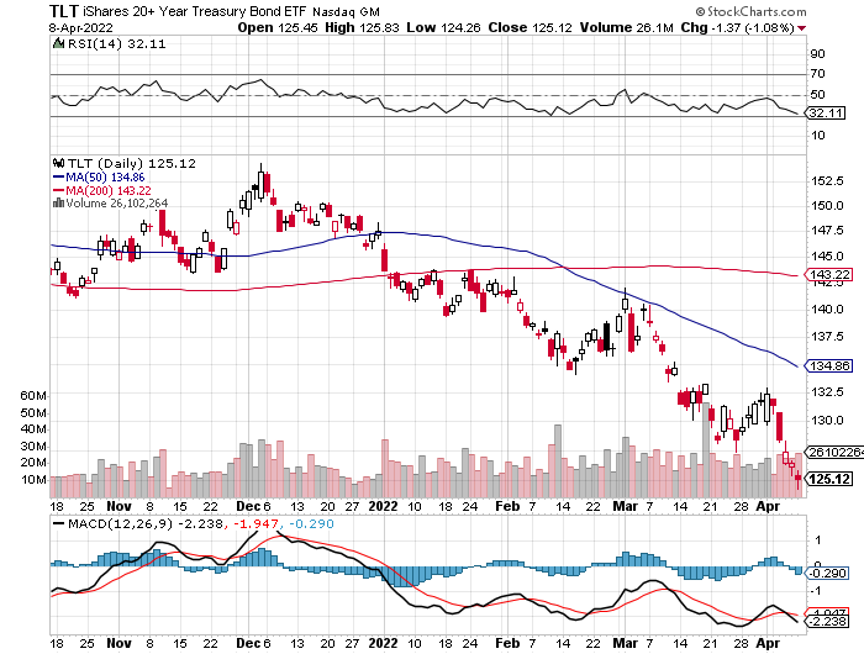

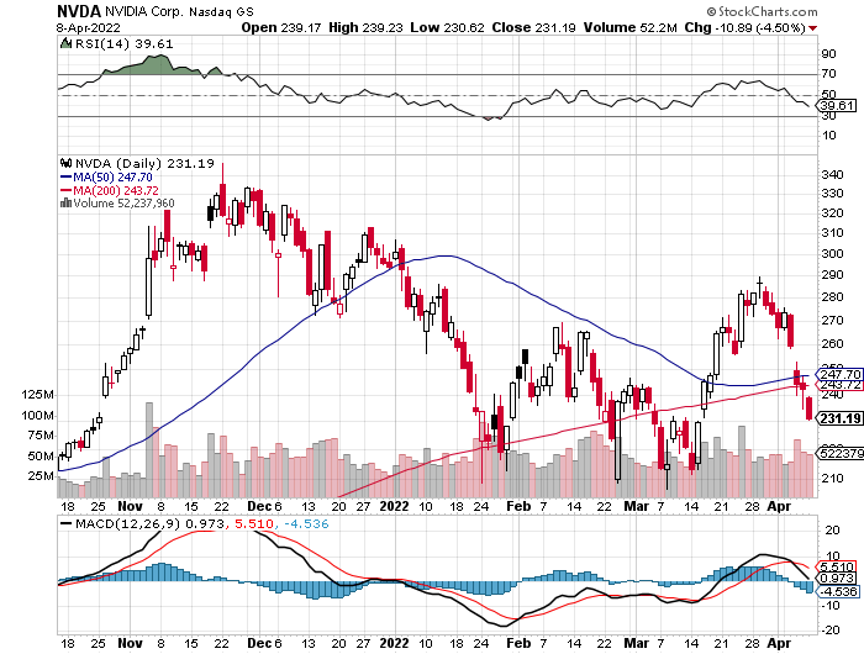
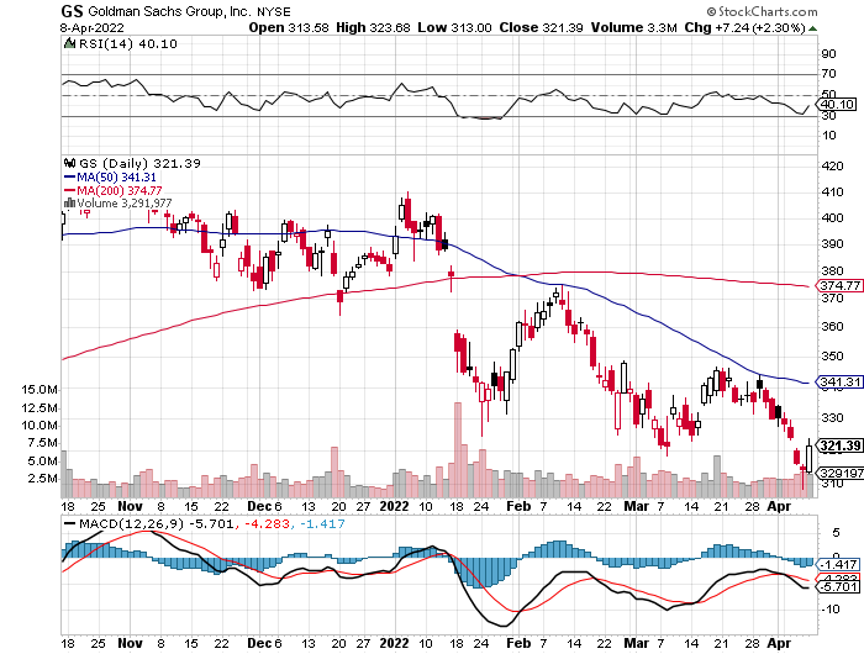
Mad Hedge Biotech and Healthcare Letter
February 15, 2022
Fiat Lux
Featured Trade:
(AN EMERGING LEADER IN THE HEALTHCARE REVOLUTION)
(CRSP), (VRTX), (EDIT), (NTLA), (PFE), (NVS), (GILD), (RHHBY), (BMRN), (QURE), (SGMO), (CLLS), (ALLO), (BEAM)

Mankind has always imagined a future filled to the brim with technological advancements serving as the panacea to all our ills.
One of the prevailing ideas focuses on the developments found in the healthcare sector.
Movies, television shows, graphic novels, and books have all pictured a world with such revolutionary technologies capable of not only diagnosing but also curing any and all types of diseases.
Since the introduction of these ideas, many have believed that these would remain in the fictional universe. However, these “ideas” have slowly transformed into reality.
One of the biggest indicators that we’re heading in that direction is the 2020 Nobel Prize in Chemistry by Jennifer Doudna and Emmanuelle Charpentier. The two were recognized for their pioneering work in CRISPR-Cas9.
Basically, Crispr-Cas9 functions like molecular scissors.
What makes this technology incredible is that Crispr-Cas9 can classify a single address out of 3 billion letters within the genome by using only a particular sequence. With this, we can repair thousands of genetic conditions and even offer more potent ways to battle cancer.
This Nobel Prize led to commercializing the 2012 discovery, Crispr-Cas9, at breakneck speed, with gene-editing companies like CRISPR Therapeutics (CRSP), Editas Medicine (EDIT), and Intellia Therapeutics (NTLA) gaining a considerable boost in their values.
Surprisingly, the trajectory of these gene-editing stocks took a tragic turn in 2021.
In fact, the once-upon-a-time-market-darling CRISPR Therapeutics saw its market capitalization brutally shaved off from $8.7 billion to $4.55 billion in the past months.
No matter how we look at it, there’s genuinely no way to sugarcoat the reality: the market has been second-guessing CRISPR Therapeutics’ ability to truly deliver on its promise.
That is, investors have started to wonder whether the company’s early stage success would amount to anything commercially.
CRISPR Therapeutics is currently working on a treatment that would implant tumor-targeting immune cells on cancer patients. The company is also prioritizing therapies that could edit cells to treat diabetes.
So far, it has made significant progress in developing treatments for a genetic disorder called sickle cell.
In the US alone, at least 100,000 people suffer from sickle cell disease, with 4,000 more born every year. Conservatively, we can estimate at least 3,000 patients availing of this one-time treatment at over $1.6 million a pop.
To date, CRISPR Therapeutics has five candidates under clinical trials for diseases like B-thalassemia, sickle cell disease, and other regenerative conditions.
It has four more queued, which target diabetes, cystic fibrosis, and Duchenne muscular dystrophy.
Compared to its rivals in the space, it’s clear that CRISPR Therapeutics is ahead when it comes to product development and trials.
Two of its candidates, transfusion-dependent beta thalassemia treatment CTX001 and sickle cell disease therapy CTX110, have already been submitted for clinical tests for safety and efficacy.
Recently, Vertex (VRTX) boosted its 2015 agreement with CRISPR Therapeutics by 10%, with the deal reaching $900 million upfront to push for quicker results in developing CTX001.
This is a crucial move for Vertex, but more so for CRISPR Therapeutics as CTX001 holds a highly lucrative addressable market.
The additional funding significantly widened the gap between the Vertex-CRISPR team and bluebird bio (BLUE) in the race to launch a new gene-editing therapy targeting sickle cell disease and beta thalassemia.
To sustain its growth, CRISPR Therapeutics’ strategy is to develop drugs that only require mid-level complexity but can rake in generous financial rewards.
This is a similar tactic used by bigger and more established biotechnology companies like Pfizer (PFE), Novartis (NVS), and Gilead Sciences (GILD).
Evidently, this strategy is a great way to ensure cash flow.
Aside from its earnings from the commercialization of these products, CRISPR Therapeutics can also attract larger companies to buy the intellectual property of their breakthrough treatments.
After all, startups generally get 100% premiums in contracts with Big Pharma.
Good examples of this are Novartis that bought AveXis and Roche’s (RHHBY) purchase of Spark Therapeutics.
The Roche-Spark agreement led to the first ever FDA-approved treatment since gene therapy trials started in the 1990s. It was for the genetic blindness therapy Luxturna, which received the green light in 2017.
The second approved treatment was a muscle-wasting disease therapy Zolgensma, which was the fruit of the Novartis-Avexis acquisition.
Both conditions are rare, but the financial rewards are impressive.
At $2 million for each treatment, Zolgensma sales reached $1.2 billion annually. At the rate the therapy is selling, Novartis estimates that Zolgensma will surpass the $2 billion mark in 2021.
Novartis and Roche aren’t the only ones partnering with smaller gene editing companies.
Pfizer has been working with biotechnology companies BioMarin Pharmaceutics (BMRN) and UniQure (QURE) to develop a treatment for blood-clotting disorder hemophilia.
The COVID-19 frontrunner is also collaborating with Sarepta Therapeutics (SRPT) to come up with a treatment for Duchenne muscular dystrophy.
Gene editing has also served as the foundation for several biotechnology companies out there today like Sangamo Therapeutics (SGMO), Cellectis (CLLS), and Allogene Therapeutics (ALLO).
The market size for gene editing treatments is estimated to be worth $11.2 billion by 2025, with the number rising between $15.79 billion to $18.1 billion by 2027.
This puts the compounded annual growth rate of this sector to be at least roughly 17%.
While this is already groundbreaking with only a handful of companies knowing how to utilize the technology, the gene-editing world has come up with a more advanced technique than Crispr-Cas9.
The technology is founded on the “base editing” or “prime editing” technique, which is the simplest type of gene editing that alters only one DNA letter.
So far, one company holds exclusive rights to this technology: Beam Therapeutics (BEAM).
When the technology became public, Beam stock has increased sixfold since its IPO in February 2020.
This latest development can resolve thousands of genetic diseases. However, it still requires further trials since “base editing” can also trigger damaging responses from the body.
Overall, I think CRISPR Therapeutics is the most promising among these high-risk stocks.
The data from two of its candidates, CTX001 and CTX110, are promising. The added funding from Vertex boosts the confidence of investors that a regulatory approval is well on its way.
The company is also sitting on a massive cash pile and investing aggressively across different rare disease programs.
While the company has yet to be considered a major force in the biotechnology world, the potential multiple successes of its products could generate a company worth hundreds of billions.
This potential alone offers an investing opportunity with a substantial asymmetric advantage for its current share price.
However, bear in mind that the stock is not for conservative investors considering risks.
More importantly, its pipeline requires patience. Hence, CRISPR Therapeutics should be played as a long-term investment.
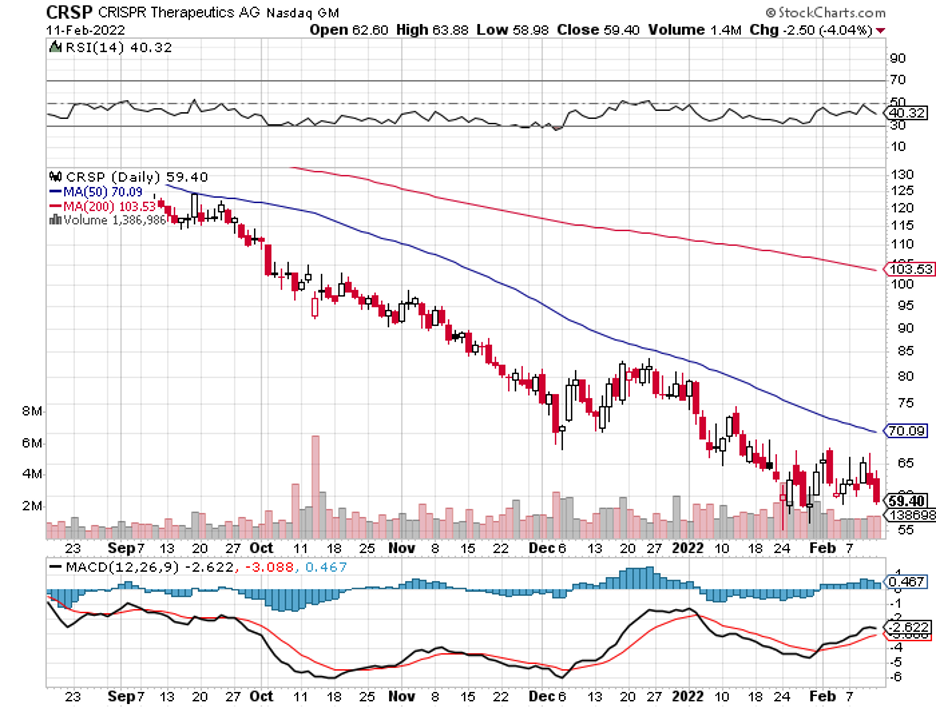
Mad Hedge Biotech and Healthcare Letter
February 8, 2022
Fiat Lux
Featured Trade:
(A NEW WAVE OF GENE-EDITING EXPERTS)
(NTLA), (REGN), (VRTX), (CRSP), (TMO), (SGMO), (EDIT), (MRK), (BIIB)

The gene-editing sector quietly achieved historical results in 2021. Last year, human trials of two in vivo CRISPR-centered treatments released promising data.
One study, conducted by Intellia Therapeutics (NTLA) and Regeneron Pharmaceuticals (REGN), worked on targeting the faulty gene responsible for transthyretin amyloidosis.
Using their new CRISPR-based therapy, they were able to record an impressive 96% decline in the transthyretin gene.
This is an impressive accomplishment not only for its high efficacy but also for the mere fact that no other work has managed to record any significant effect on the gene for almost a decade now.
The other study is by Vertex Pharmaceuticals (VRTX) and CRISPR Therapeutics (CRSP). Over the years, the two have been collaborating on coming up with treatments for various rare diseases.
In 2021, they recorded promising results in their clinical trials for sickle cell disease and beta-thalassemia. Aside from the potency of these treatments, there is a possibility that the effects would offer long-lasting improvements in the patients' lives.
While 2021 was clearly a remarkable year for the gene-editing sector, all signs indicate an even better 2022.
If the sector doesn’t deliver, there will be 2023 and the year after. After all, the gene-editing world is the kind of space that gets better with age.
More than that, this sector will keep evolving and attracting new players every year.
Hence, key players like Thermo Fisher Scientific (TMO), Sangamo Therapeutics (SGMO), Editas Medicine (EDIT), Merck (MRK), and Oxford Genetics cannot expect to be the top names in the industry forever.
Recently, some names have been making waves in the gene-editing industry.
One is Excision BioTherapeutics. Founded in 2015, this Philadelphia biotechnology company leverages its CRISPR-based platform to target viral infections.
Basically, they aim to snip the viral DNA out of the host genome.
To date, the company’s most advanced project is its HIV treatment: EBT-101. So far, Excision has managed to functionally cure its test animals of the infection by removing their HIV genomes.
Ultimately, Excision’s goal is to come up with a “one-and-done” therapy for viral diseases.
Apart from working on HIV treatments, the company is also looking into potential cures for herpes simplex, hepatitis B, and a rare brain infection called multifocal leukoencephalopathy.
If these treatments succeed, Excision’s therapies would be available in highly specialized treatment centers.
Another promising biotechnology company is California’s Scribe Therapeutics, which was founded in 2018.
Describing their approach to be guided with an “engineer first” philosophy, Scribe’s plans to use CRISPR-based gene-editing tools to achieve their goals.
Instead of using the conventional CRISPR-Cas9 methods, the company opts for modified versions of the RNA-guided genome editors or CasX enzymes.
Scribe has been developing these CasX enzymes to ensure that they acquire the qualities of the target for enhanced specificity.
That is, the company wants its “editor” to learn as much as possible about the characteristics of the system to deliver intentionally designed solutions.
Simply, Scribe aims to control all elements and eliminate the need to leave anything to chance or even nature.
Since its founding, Scribe has been actively developing solutions for unmet medical needs.
For instance, it has been working with Biogen (BIIB) to develop and eventually market CRISPR-based treatments that target an underlying genetic component of a nervous system disease called amyotrophic lateral sclerosis.
The agreement states that Scribe will get $15 million upfront and receive over $400 million in potential milestone payments.
The company has already started testing its technology in mouse models, focusing on neurological and neurodegenerative conditions.
Given their current trajectory, Scribe expects to release data by the third or fourth quarter of 2022 or early 2023.
All in all, gene-editing tools have evolved so much from the mid-twentieth century. Back in the 1970s and 1980s, the process of gene targeting was only possible in experiments on mice.
Since then, the ever-expanding world of science has pushed the sectors of gene analysis and manipulations to cover all kinds of cells and organisms.
Considering the increasing demand in this sector, it’s no wonder the gene-editing world has been growing at breakneck speed over the past years—a pace that won’t slow down anytime soon.

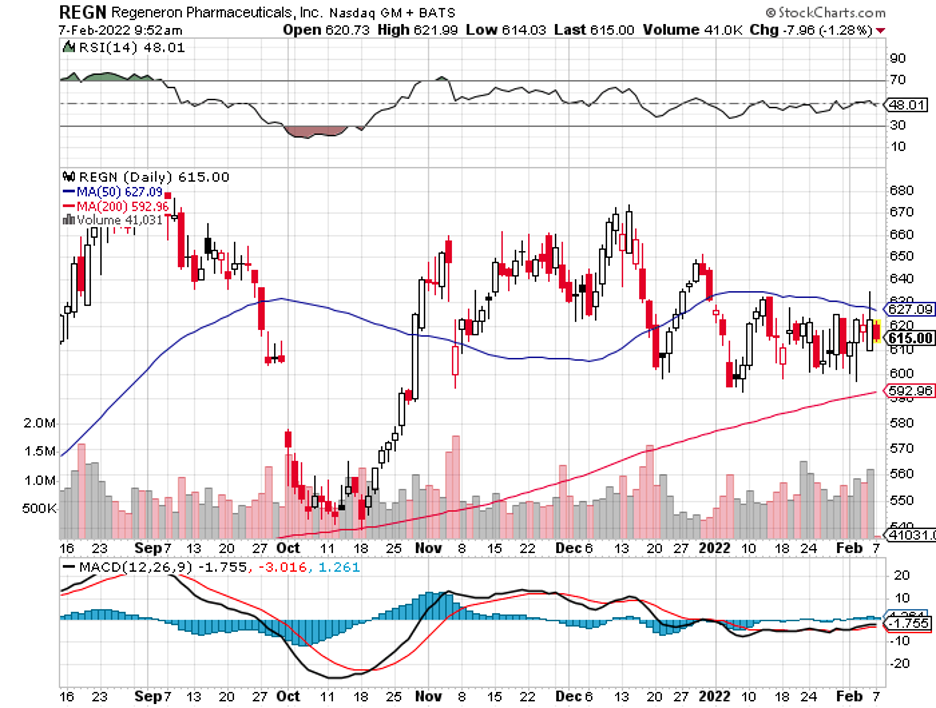
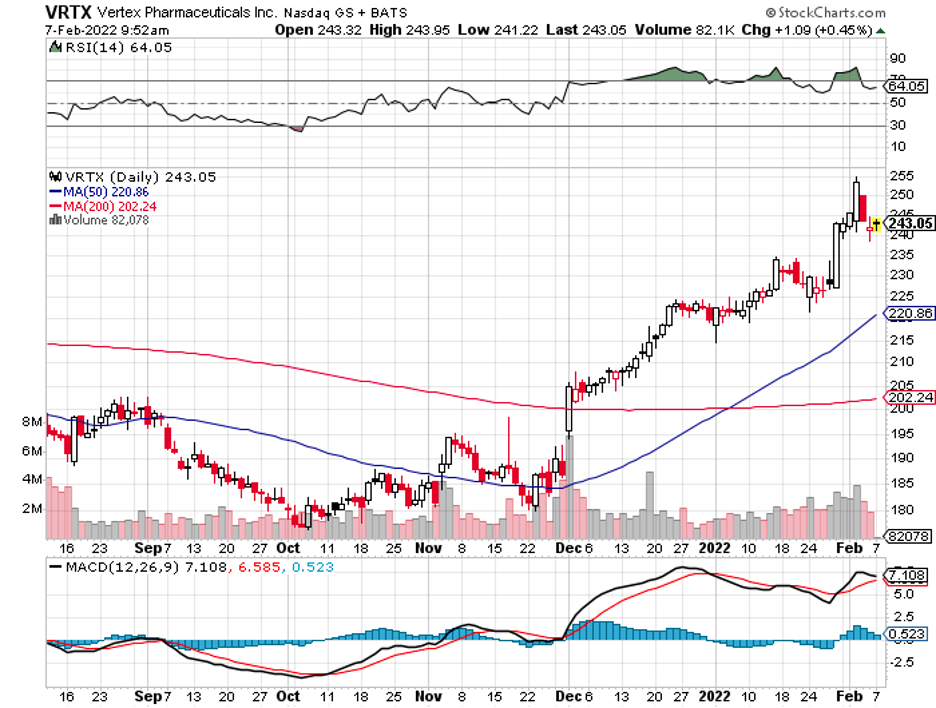
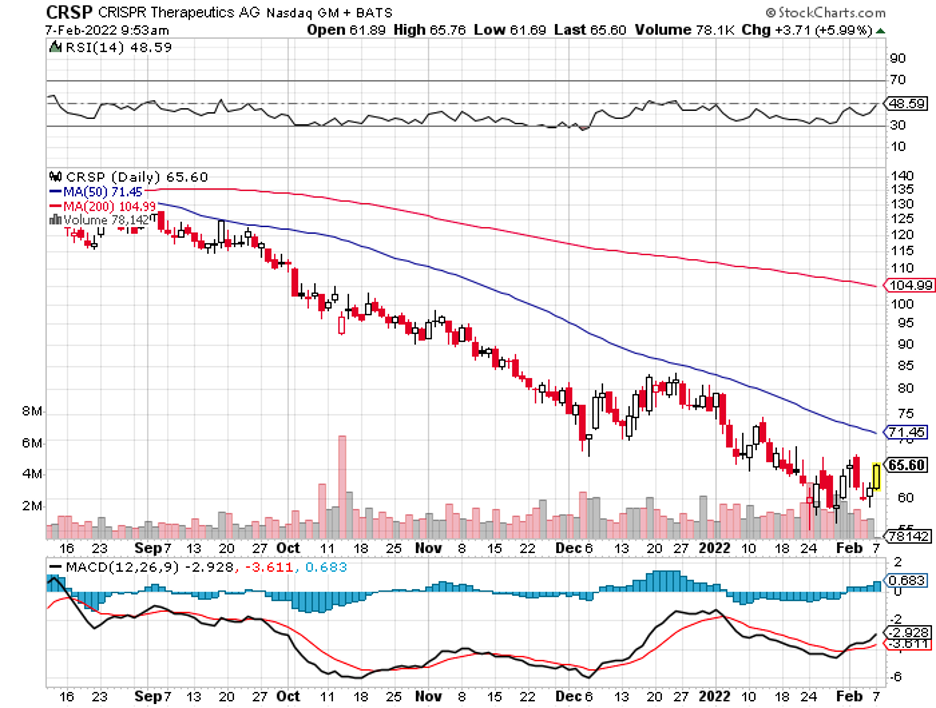
Global Market Comments
February 4, 2022
Fiat Lux
Featured Trades:
(FEBRUARY 2 BIWEEKLY STRATEGY WEBINAR Q&A),
(PYPL), (PLTR), (BRKB), (MS), (GOOGL), (ROM), (MSFT), (ABNB), (VXX), (X), (FCX), (BHP), (USO), (TSLA), (EDIT), (CRSP)

Legal Disclaimer
There is a very high degree of risk involved in trading. Past results are not indicative of future returns. MadHedgeFundTrader.com and all individuals affiliated with this site assume no responsibilities for your trading and investment results. The indicators, strategies, columns, articles and all other features are for educational purposes only and should not be construed as investment advice. Information for futures trading observations are obtained from sources believed to be reliable, but we do not warrant its completeness or accuracy, or warrant any results from the use of the information. Your use of the trading observations is entirely at your own risk and it is your sole responsibility to evaluate the accuracy, completeness and usefulness of the information. You must assess the risk of any trade with your broker and make your own independent decisions regarding any securities mentioned herein. Affiliates of MadHedgeFundTrader.com may have a position or effect transactions in the securities described herein (or options thereon) and/or otherwise employ trading strategies that may be consistent or inconsistent with the provided strategies.
This site uses cookies. By continuing to browse the site, you are agreeing to our use of cookies.
OKLearn moreWe may request cookies to be set on your device. We use cookies to let us know when you visit our websites, how you interact with us, to enrich your user experience, and to customize your relationship with our website.
Click on the different category headings to find out more. You can also change some of your preferences. Note that blocking some types of cookies may impact your experience on our websites and the services we are able to offer.
These cookies are strictly necessary to provide you with services available through our website and to use some of its features.
Because these cookies are strictly necessary to deliver the website, refuseing them will have impact how our site functions. You always can block or delete cookies by changing your browser settings and force blocking all cookies on this website. But this will always prompt you to accept/refuse cookies when revisiting our site.
We fully respect if you want to refuse cookies but to avoid asking you again and again kindly allow us to store a cookie for that. You are free to opt out any time or opt in for other cookies to get a better experience. If you refuse cookies we will remove all set cookies in our domain.
We provide you with a list of stored cookies on your computer in our domain so you can check what we stored. Due to security reasons we are not able to show or modify cookies from other domains. You can check these in your browser security settings.
These cookies collect information that is used either in aggregate form to help us understand how our website is being used or how effective our marketing campaigns are, or to help us customize our website and application for you in order to enhance your experience.
If you do not want that we track your visist to our site you can disable tracking in your browser here:
We also use different external services like Google Webfonts, Google Maps, and external Video providers. Since these providers may collect personal data like your IP address we allow you to block them here. Please be aware that this might heavily reduce the functionality and appearance of our site. Changes will take effect once you reload the page.
Google Webfont Settings:
Google Map Settings:
Vimeo and Youtube video embeds:
